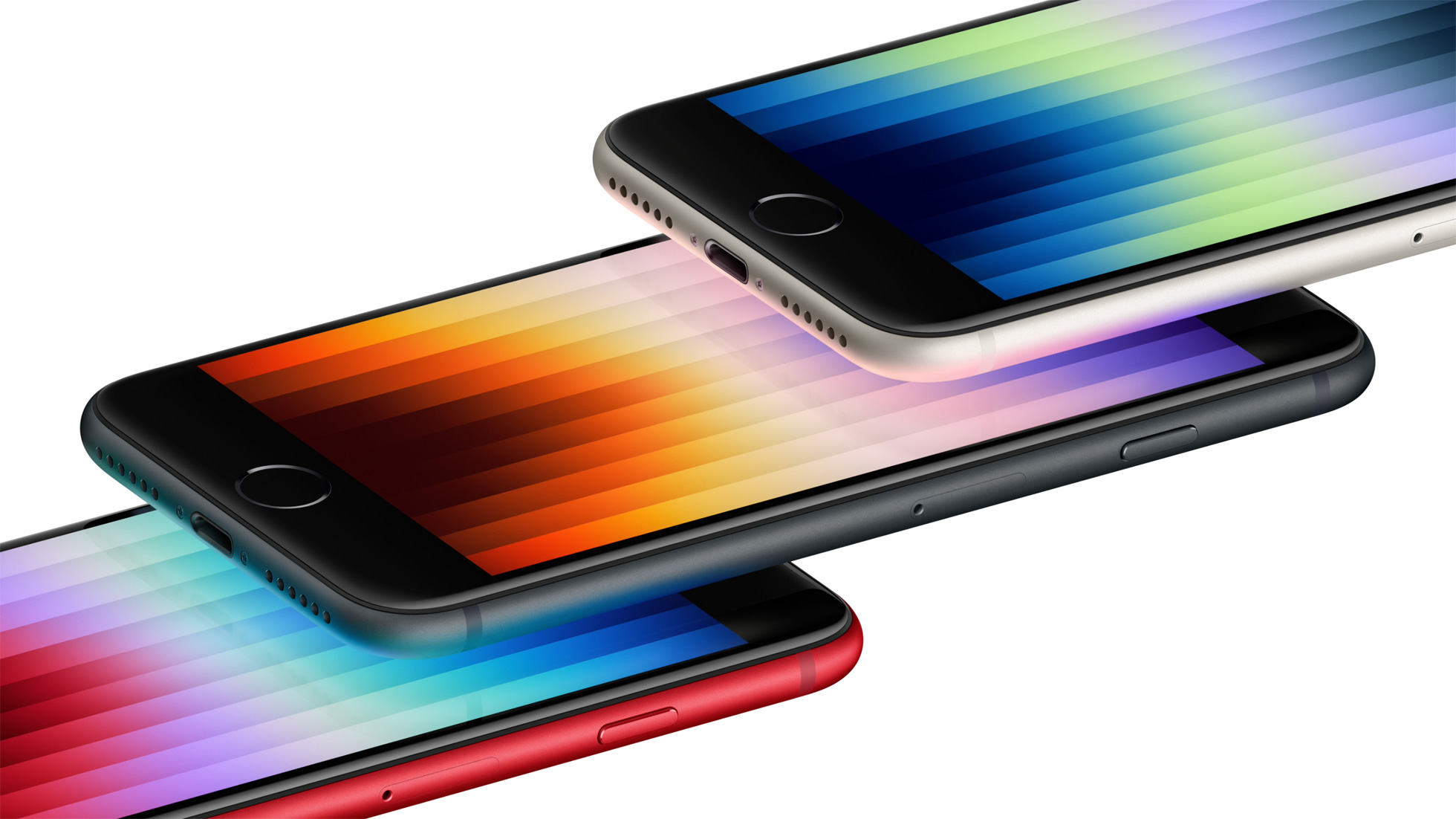Our Verdict
The iPhone SE (2022) packs some ridiculously capable features into a very small frame. That's its blessing and its curse: the small size will be exactly what some people want, and the strong camera and processor make it great for lots of creative tasks on the go… except that the battery life and limited screen space mean that it's hard to tap all of that creative potential. It's great for the people it's designed for, but creatives on a budget may be better suited to an iPhone 11 or Samsung Galaxy A series phone.
For
- Powerful chip and 5G
- Very strong camera
- One-handed size
Against
- 4.7-inch screen is limiting
- Relatively short battery life
- Single-lens camera
Why you can trust Creative Bloq
The Apple iPhone SE (2022) is the new cheapest phone in Apple's range, replacing the previous iPhone SE with range of internal upgrades, as well as a few external ones – not that you can really tell from the outside.
The iPhone SE (2022) retains the same look as the iPhone 8, which was essentially a new spin on the iPhone 6 – so the design has unquestionably aged a little. But what's inside hasn't: this is a 5G-capable phone with Apple's A15 chip powering it, meaning it's basically the joint-fastest phone on the planet.
That processor upgrade affects other areas of the phone too – the single-lens camera might mean this isn't the best iPhone for photography in many ways, but thanks to the new image processing, the actual quality of the shots is alarmingly close to the iPhone 13 Pro…
It's a phone of split halves then: on the one hand, it's packed with some of the most advanced tech around in a frame small enough to be used on-handed, which is a rarity these days; on the other, it's limited in features by its size and price in a way that you can't get around in the future.
For this price, it strikes a very good balance, albeit not a perfect one. But as you'll see, for the price, there's a lot of phone here – and don't forget to check out iPhone SE deals page to see if you can get it even cheaper.
iPhone SE (2022) review: price
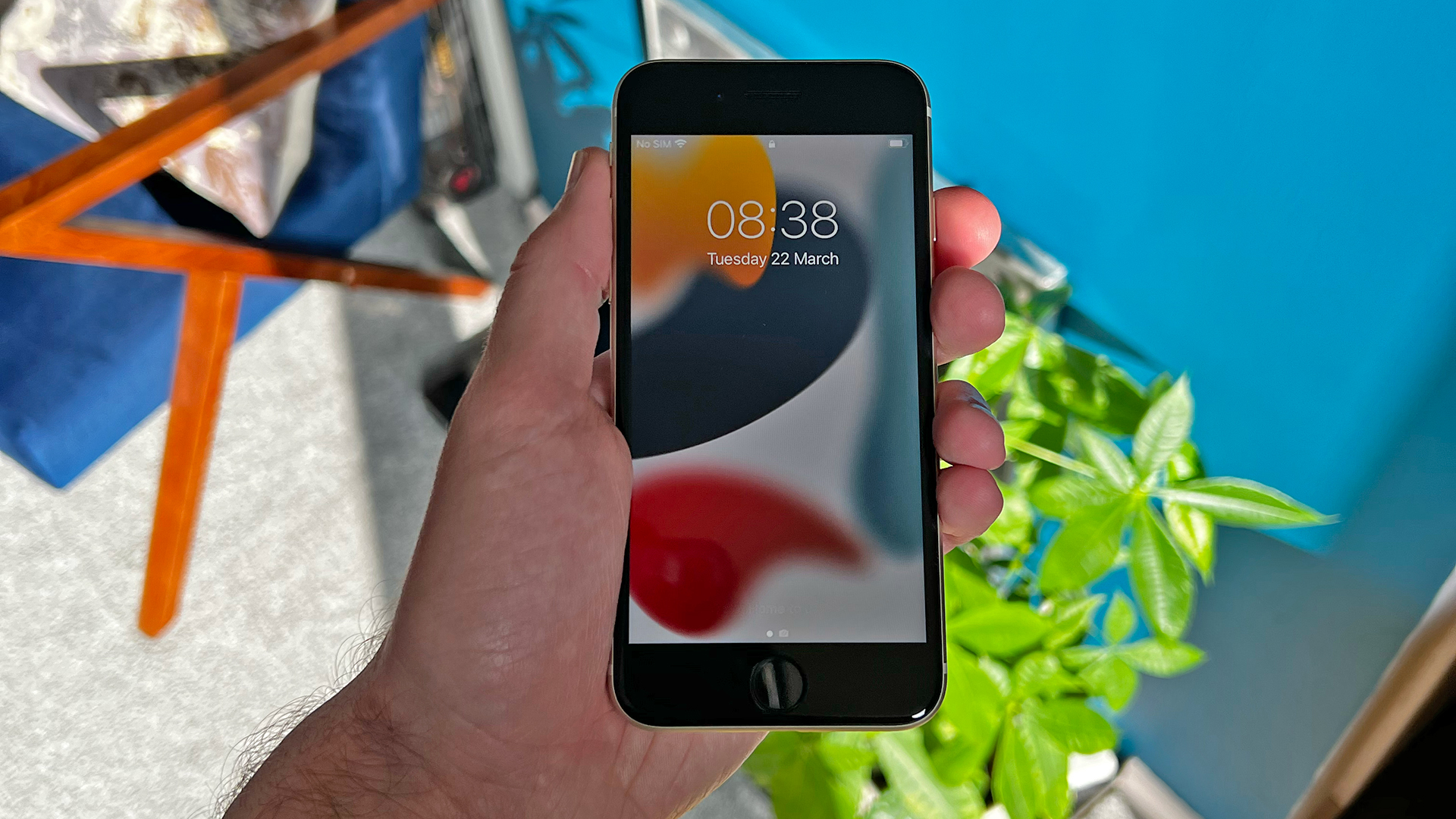
The iPhone SE (2022) is available SIM-free from $429 / £419 / AU$719, which gets you 64GB of storage. In the context of the light user that the iPhone SE largely seems aimed at, this will be an okay amount in many cases.
For Creative Bloq readers, though, stepping up to the 128GB version for $479 / £469 / AU$799 seems like a no-brainer. It's a fairly small upgrade cost, but it gets you a lot more freedom for storing photos and videos on the device.
It's worth noting that this is basically the cost of an iPhone 11, which is the next step up price-wise in Apple's range. However, you'd only get 64GB of storage from the iPhone 11.
If you want more storage sill, the 256GB version of the iPhone SE costs £569/$579/AU$969. Note that the iPhone 11 doesn't even come in capacities this large any more – you can only get the iPhone SE, iPhone 12 or iPhone 13 models in this capacity.
iPhone SE (2022) review: display
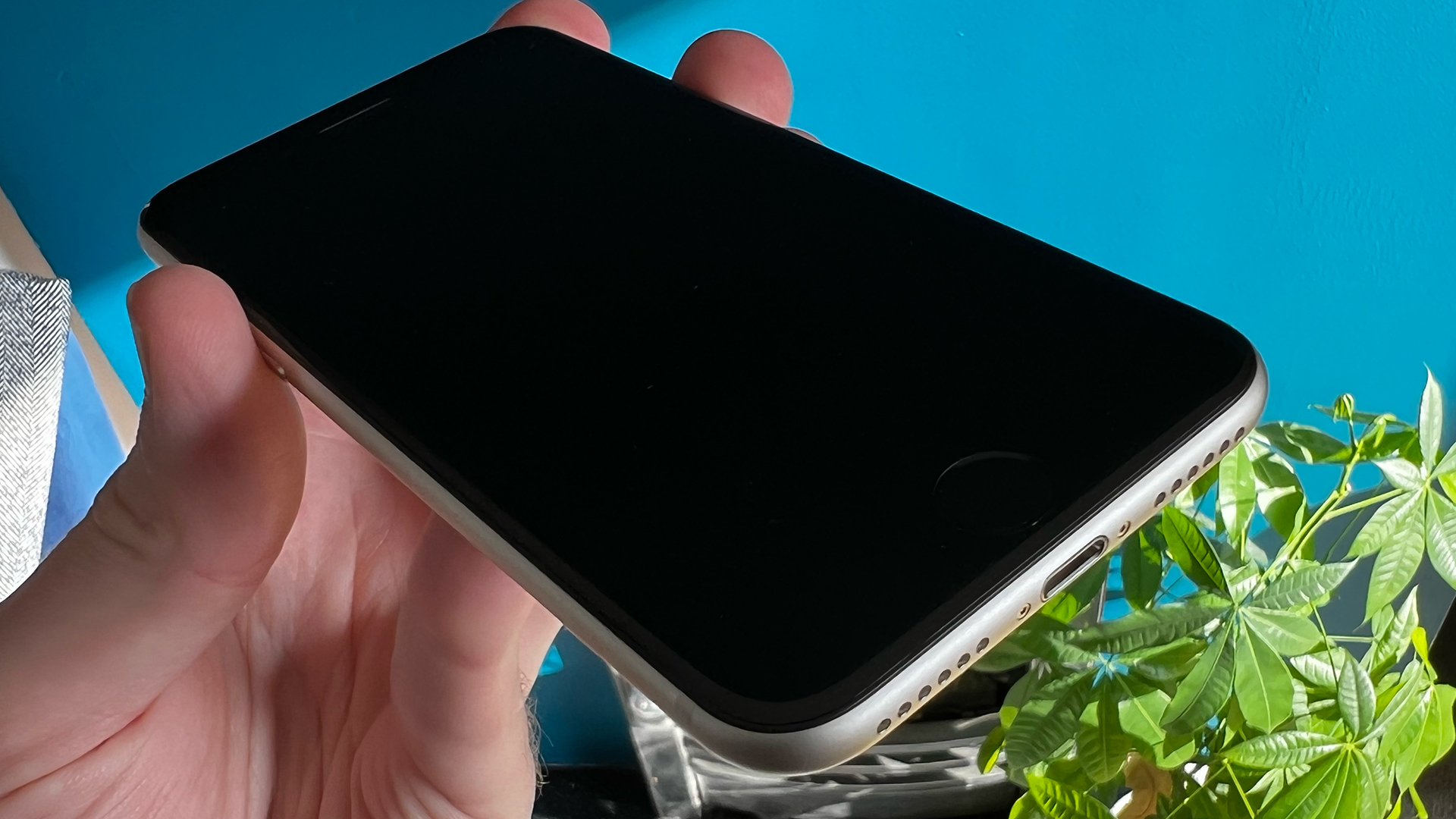
The iPhone SE's display is, as mentioned before, a petite 4.7 inches. With a resolution of 1334x750 (326ppi), it's sharp enough to view photos and videos with clarity – flagship phones will go much sharper, but also feature larger screens. With the small, clear IPS LCD display of the iPhone SE, this resolution is absolutely sharp.
That IPS LCD display supports the P3 colour gamut, and can hit a typical 625 nits of maximum brightness, which means it's vibrant and punchy. Obviously, the contrast is no match for the OLED screens on smartphones these days (including on some phones in the iPhone SE's price range), but Apple's penchant for accuracy means this is still a sensible choice for creatives.
The screen is quite reflective, though, and picks up fingerprints like nobody's business – much more easily than iPhone 13, and they interfere with the image more prominently.
The other potential disappointment here is that there's no 90Hz or 120Hz refresh rate support, though in phones this doesn't have much practical benefit, so while it would be nice, we're not especially down on the iPhone SE for it.
Apple's True Tone tech is supported, making it easier on the eyes in the evening light.
The only real addition to the screen over the old version is Haptic Touch, which is extremely welcome. This enables you to do things like view a richer version of notifications from the Lock Screen by hard pressing on them – the old iPhone SE lacked this, which made it feel like a cut-back version of an iPhone. This doesn't have that issue.
iPhone SE (2022) review: power & performance
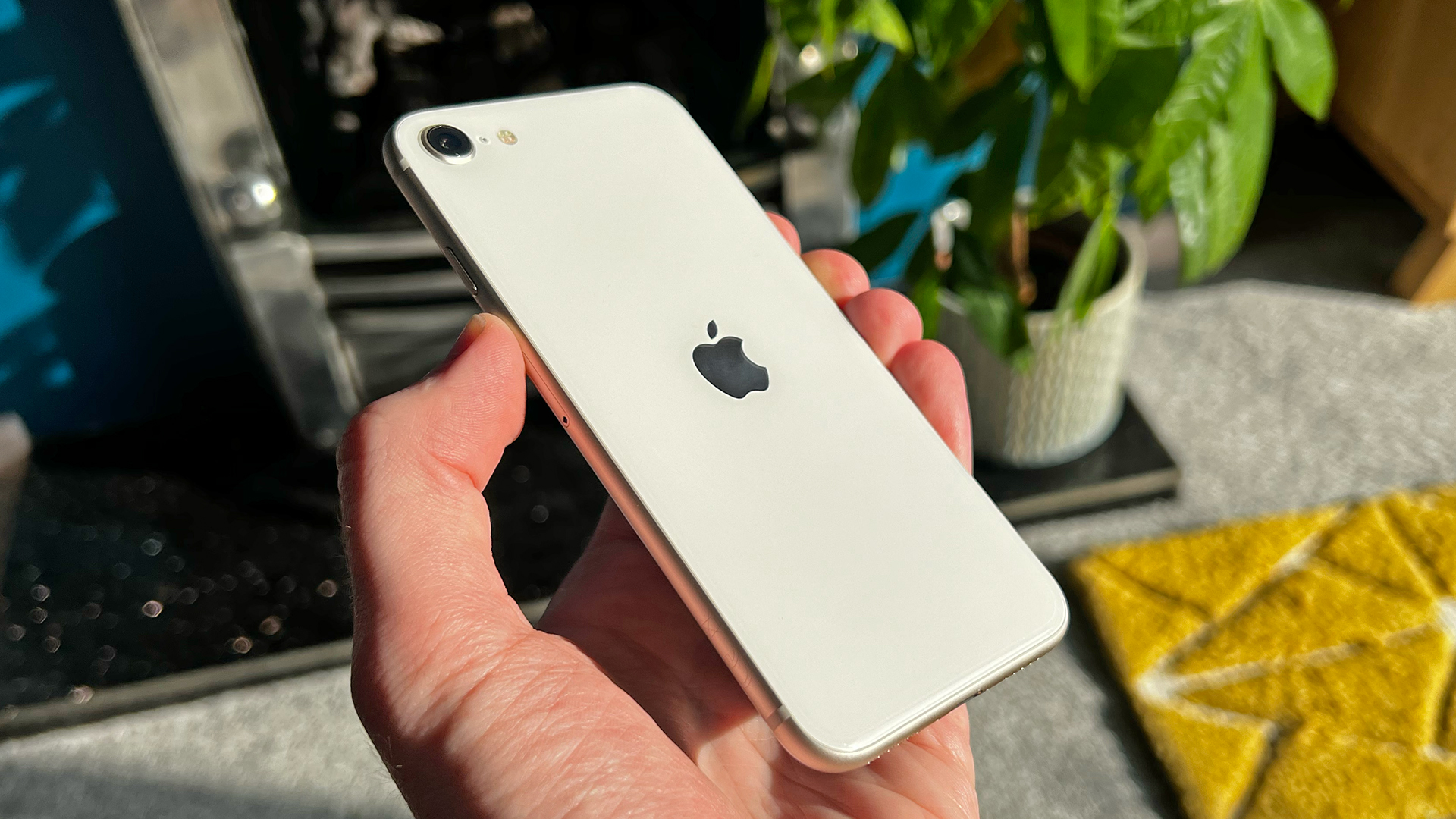
The Apple A15 chip here is the same as you get in the iPhone 13, with no real downgrade in any way despite the low price. It's still the fastest phone chip in the world, still… and all in a teeny tiny frame.
This means you can take photos and apply edits of any complexity you want with instant results. Or shoot and then edit 4K video with multiple streams. You can open complex illustrations with lots of layers and make changes with instant effects…
Except doing any of this isn't easy on a screen of this size, because there just isn't much space for both the interface and the content. The power of the chip is ideal for people who may want to get creative on their phone, but that capability is locked in a battle of wills with the frustration of not having much space.
But it does all mean that this phone is absolutely a first-class citizen for iOS, with support for useful and advanced features such as Live Text, recognising not only any text you view with the camera and making it copyable, but also any text in basically any image on the phone.
And it'll be totally future-proof for any new features like this – if you want to make sure your next iPhone will be supported and updated for years, the iPhone SE absolutely fits that bill.
5G support has been added alongside the new powerful processor, and it's very fast. We tested in the centre of Bath, in an office building, and got speeds of over 650Mbps down and over 70Mbps up. Obviously, this will depend on your network and a ton of other factors, but there's no question that the iPhone SE can really shift the bits when it's able.
One other advantage of the A15 processor is that it's more efficient than the previous chip, and Apple has also improved the battery chemistry, which combine to give this iPhone SE longer life than the last version. However, compared to the iPhone 13 – which took a major leap forward compared to previous iPhones – it's nowhere near as long lasting.
With the iPhone 13, you can get through a whole day even of fairly hardcore use – a tough working day out of the office, for example. But that's a dream for the iPhone SE.
By Apple's own figures, depending on what task you're doing, you can expect 30% to 50% more battery life from the iPhone 13 than the iPhone SE. In regular mixed use, you might not see such a dramatic drop every day, but we have definitely felt the pinch of using the iPhone SE. We simply can't make it through a day without topping up, and it felt like those iPhone days were behind us.
With a higher-speed charger (20W), you can charge from 0 to 50% in about 30 minutes. We've seen the whole battery charge from flat in about an hour, though, so it appears to able to keep that speed up.
iPhone SE (2022) review: cameras
The iPhone SE's camera manages to be both basic and pretty incredible at the same time. Compared to the previous model, there's no big leap in the lenses or sensor hardware, which means you're getting a single 12MP rear camera with f/1.8 wide-angle lens, plus an 7MP front camera with f/2.2 wide-angle lens.
The upgrade is from the A15 chip, which delivers all of Apple's latest and greatest image processing powers to that sensor. You don't get all of the features of the iPhone 13 here – Night mode for regular photos, for example, or Dolby Vision HDR or Cinematic Mode for video – but you do get the vital smarts that make the pictures better. You do get Portrait Mode here, but it only works for people.
The end result is photos that have all the detail of even the iPhone 13 Pro, but with less vibrant colours when compared side by side, with a less expansive dynamic range. But the last of those isn't even that bad a thing – the iPhone SE lightens its shadows more than the iPhone 13 Pro, which actually lots of people may well prefer.
Here are some camera samples, with notes.
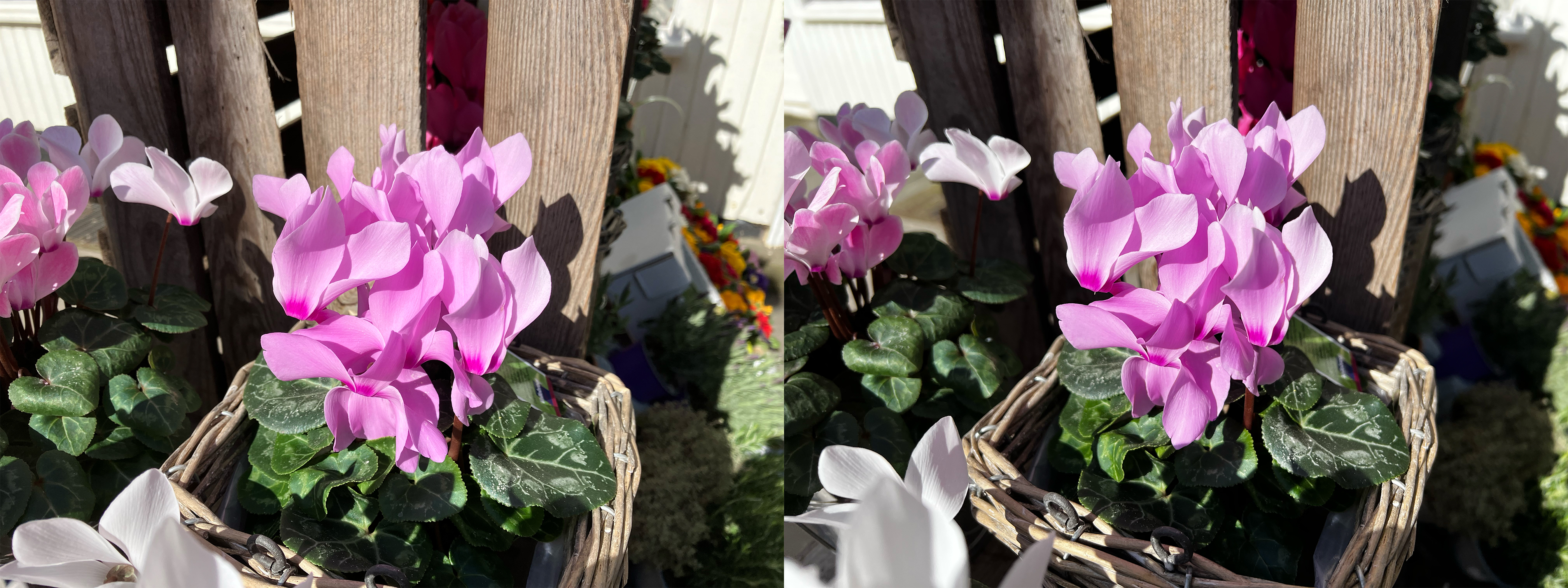


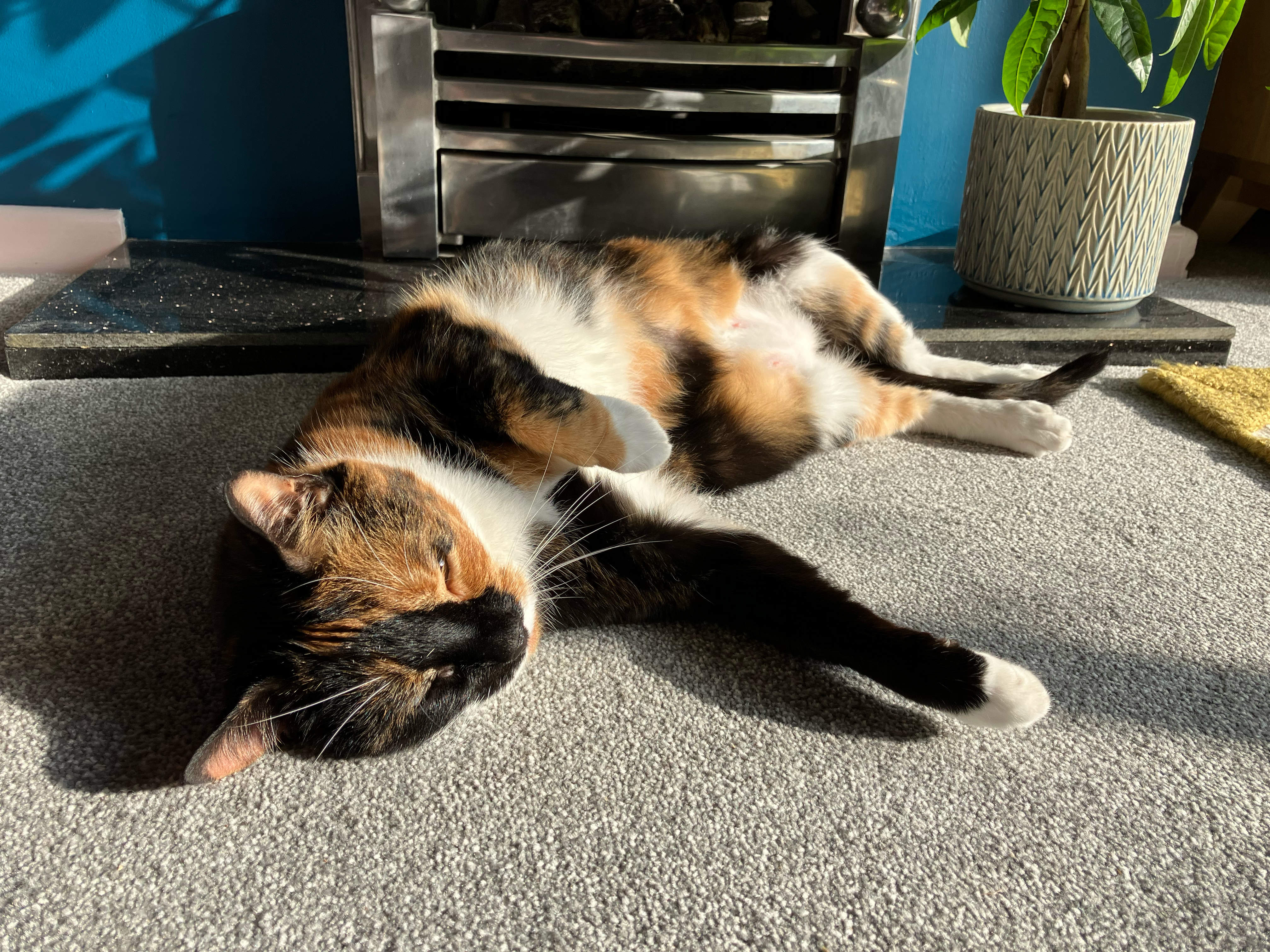
The front camera is a similar story – in good light, it holds up perfectly well against higher-specced cameras from other phones.

The issue is really only that you've got just the single lens on the rear, so you lack the flexibility to take nicely frame portraits with a telephoto, dramatic landscapes or cityscapes with an ultra-wide, or interesting macro shots, or any of the other additions phones offer when you spend a little more.
It means that while this takes really impressive shots, the problem isn't what it can take, it's all the shots you literally can't take with it, even as they sit in your mind's eye.
It's a similar story with video when it comes to the quality – it may not capture in HDR, but its dynamic range is strong, it captures at up to 4K 60fps, and it includes Apple's incredibly impressive shake reduction tech, so handheld shots look smooth.
iPhone SE (2022) review: key features
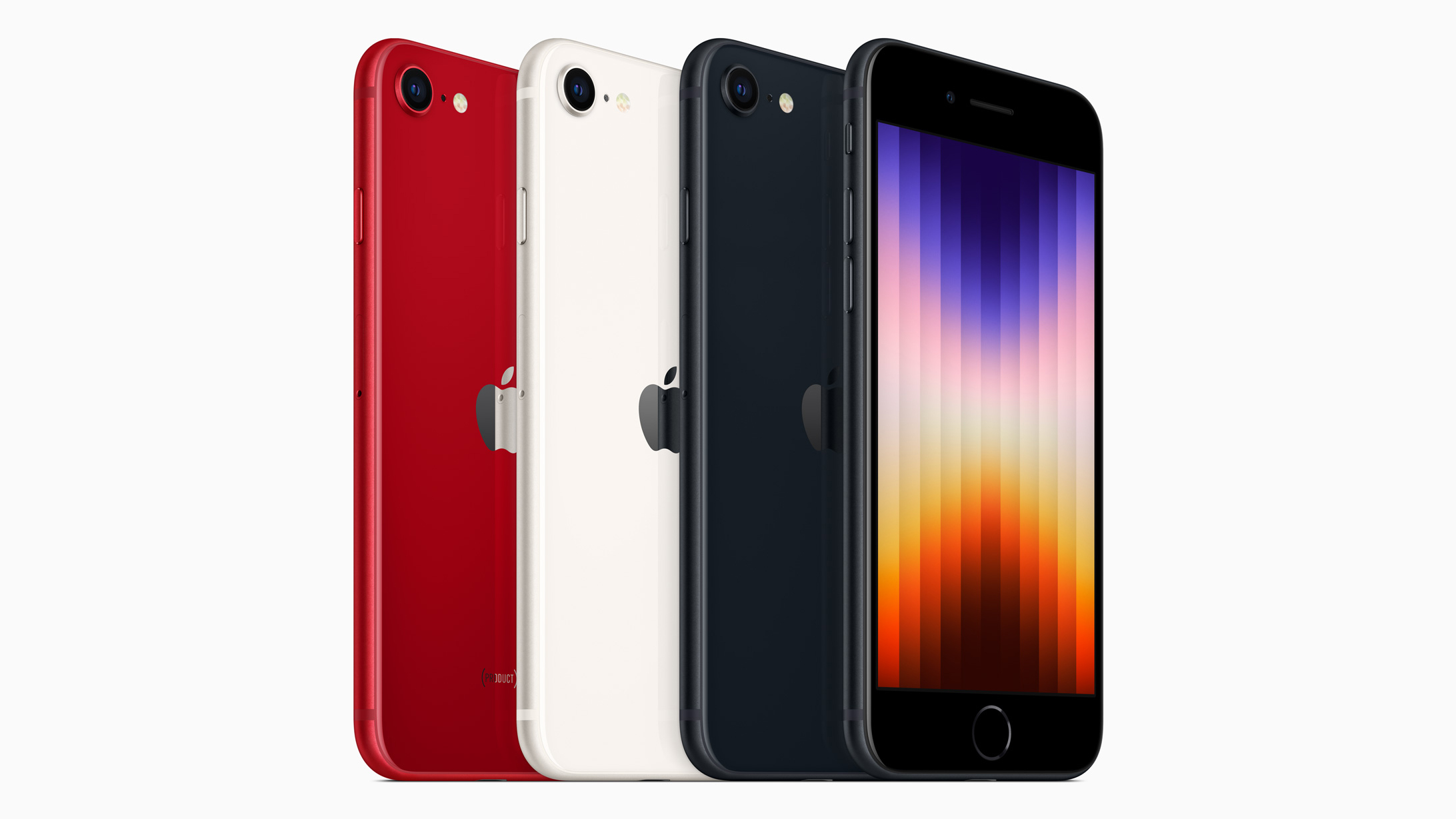
Security is provided here by Touch ID, built into the Home button at the bottom of the screen. It's very fast, and retains the benefit of being usable even with a mask on, and the downside of not being usable with gloves on. Swings and roundabouts.
There are stereo speakers when held in landscape, and these are pretty good – they do a good job of offering a balanced sound, with a focus on clarity for voices. The front of the screen actually really picks up the vibrations of lower-end frequencies if you have the volume above about 40%, which feels very odd. The back panel doesn't – it's only if you rest a finger on the front that you notice.
You can charge the iPhone SE over Lightning or Qi wireless charging. There's no support for Apple's new MagSafe charging, so the Qi charging is limited to 7.5W.
There's fast 802.11ax Wi-Fi, plus Bluetooth 5.0. This model has an upgraded GPS system, including GPS, GLONASS, Galileo, QZSS and BeiDou options, for better accuracy worldwide.
iPhone SE (2022) review: design
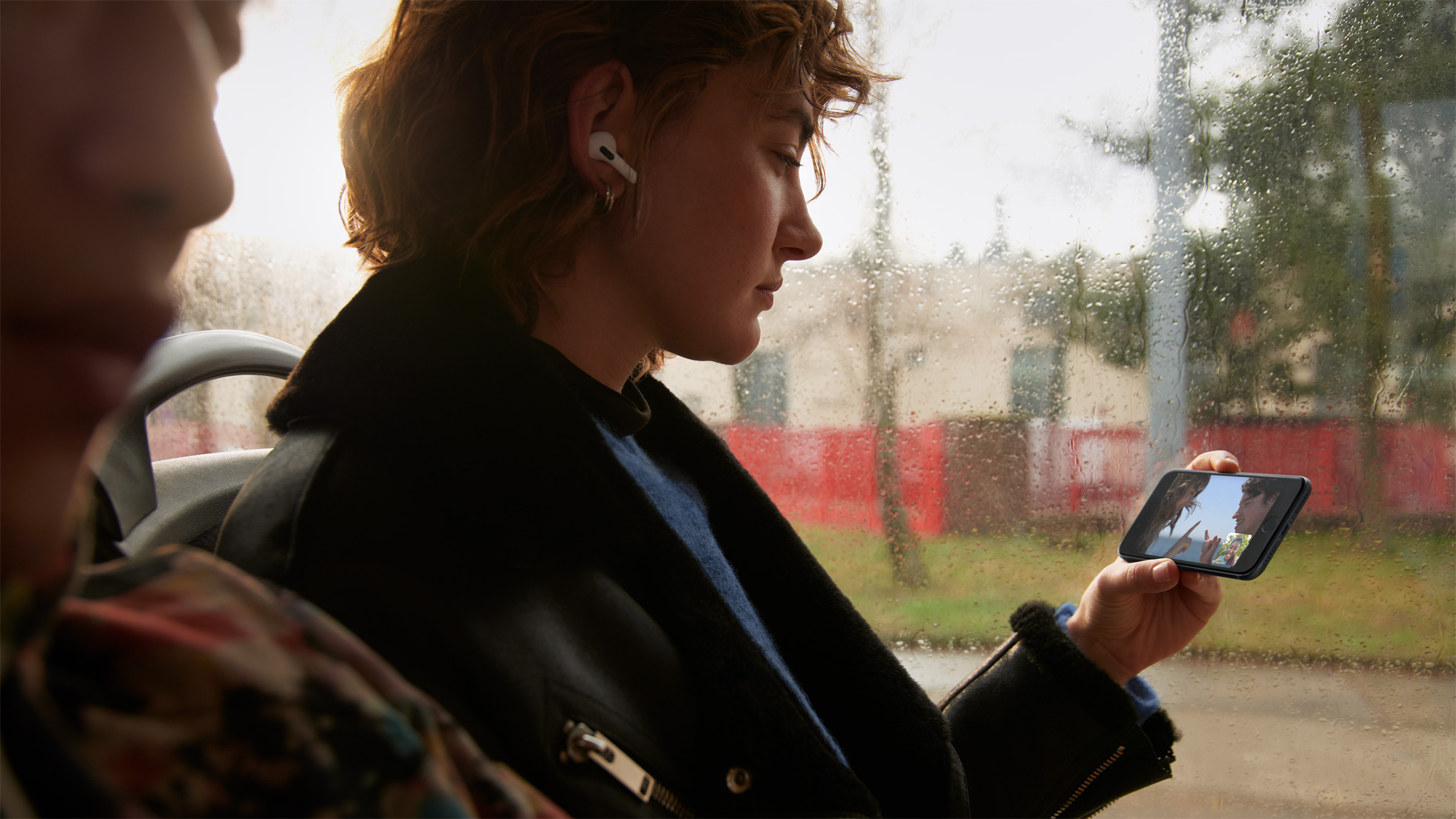
The iPhone SE retains the same look as it had before overall, but actually there's a lot of change. It's mostly about the glass: it's now the same tough glass Apple uses on the back of the iPhone 13 models, and while this doesn't mean it's drop-proof, it does mean the odds are a little more in your favour.
Note that we said it's the same as the back of the iPhone 13 – it doesn't use the ultra-tough 'Ceramic Shield' material from the front of the iPhone 13. But it's a step up from the previous version.
It comes in three colours: Starlight, Midnight and Product(Red). Starlight is silver with an undertone of gold, Midnight is black with an undertone of blue, and Red is red with red and more red.
With the screen on, it's hard to claim that the iPhone SE looks anything other than a few years out of date, thanks to its huge forehead and chin, but it's still made from perfectly premium-feeling materials, and the back looks very smart and modern.
The curved edges play into its small and one-handed use better than the flat sides of the iPhone 13 phones, too.
It's just 67.3x138.4x7.3mm (2.65x5.45x0.29 inches), and weighs a mere 144g, all of which is incredibly refreshing in the world of giant phones, if you don't mind the screen size limitation that comes with it.
It's also IP67 rated, so should be okay against small accidental dunkings.
iPhone SE (2022) review: should you buy it?
The iPhone SE (2022) is excellent value for the features it offers, as long as you can live within the limitations of its screen size, its battery life and its single-lens camera.
We think most creatives should really look to give themselves the extra screen space of the iPhone 11 if you can deal with the jump to the 6.1-inch screen, and take advantage of the dual-lens camera, battery life and bigger canvas.
But if it's small size you favour, then nothing else on the market gives you this kind of future-proofed performance and camera quality in such a pocketable phone.

Thank you for reading 5 articles this month* Join now for unlimited access
Enjoy your first month for just £1 / $1 / €1
*Read 5 free articles per month without a subscription

Join now for unlimited access
Try first month for just £1 / $1 / €1
out of 10
The iPhone SE (2022) packs some ridiculously capable features into a very small frame. That's its blessing and its curse: the small size will be exactly what some people want, and the strong camera and processor make it great for lots of creative tasks on the go… except that the battery life and limited screen space mean that it's hard to tap all of that creative potential. It's great for the people it's designed for, but creatives on a budget may be better suited to an iPhone 11 or Samsung Galaxy A series phone.
Matt is Managing Editor at TechRadar.com, and previously worked on T3, MacLife and MacFormat. He's been testing technology for over a decade, working in specialist Apple publications as well general technology and creative journalism, and has charted Apple’s ups and downs since his student days (but still hopes to hear “one more thing”). By day, you can find him covering TV, audio, smart home gear and more at T3.com, as Home Tech Editor. By night, he's probably updating or pairing or installing some new piece of technology in the quest for the perfect setup.
